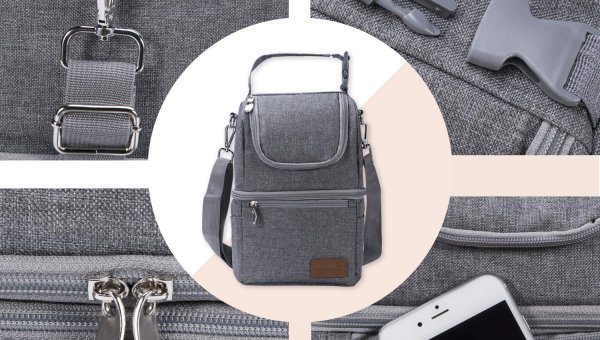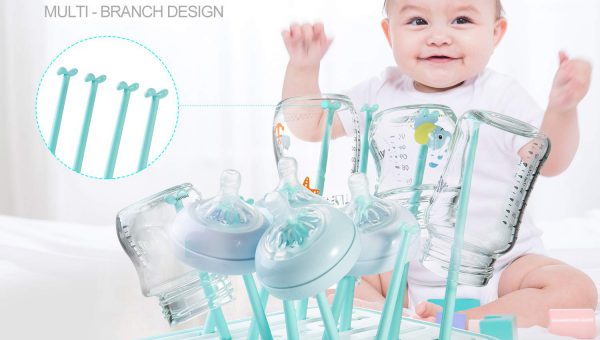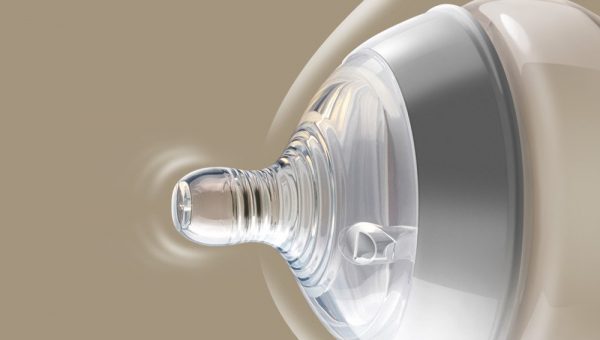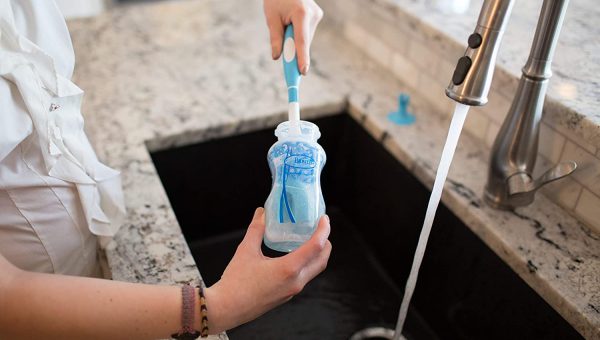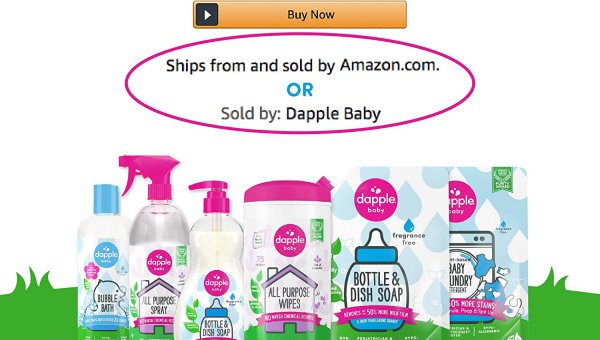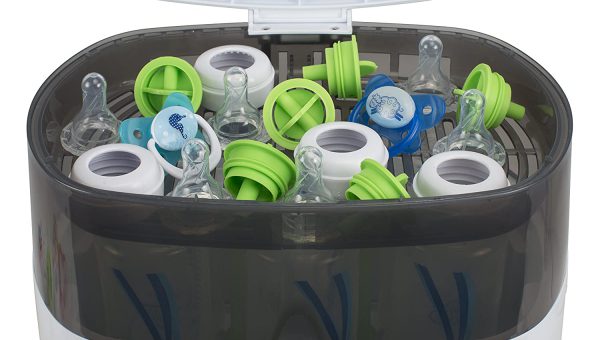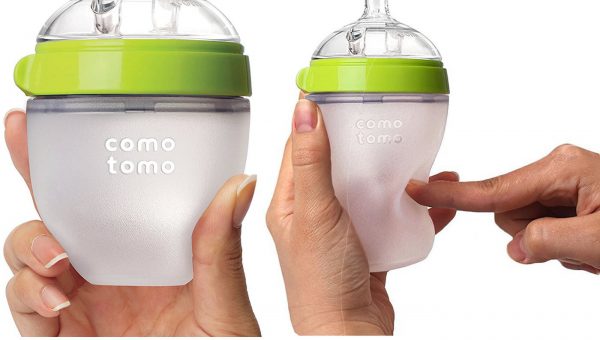Baby Bottles
Baby bottles and accessories are some of the most important items in a baby registry. It rings true whether you prefer to bottle-feed from the get-go, combine breast milk and formula, or eventually switch from breast to bottle. In any case, make sure to do a bit of research before stocking up on bottle-feeding paraphernalia. With the endless options in the market, after all, it is easy to get overwhelmed and end up buying the wrong product. Read on to find out how to choose the best baby bottles and accessories for your bundle of joy.
Baby Bottles: What You Need to Know
Baby bottles are also called nursing bottles or feeding bottles. They include a nipple, which enables infants and younger children to draw milk from the bottle. Specifically, these bottles are used to deliver breast milk or infant formula to babies. Bottles and nipples come in varying types, shapes, sizes, and materials. On top of that, there are also accessories you can buy to improve and streamline the feeding process.
As always, make sure to buy only from established brands and manufacturers. Comotomo, TommeeTippee, Philips Avent, NUK, and Dr. Brown’s are some of the most trusted ones.
What Are the Different Types of Baby Bottles?
Several types of baby bottles exist in the market. They are mainly categorized based on their shapes, forms, and features. Knowing the differences between each type, especially their respective pros and cons, can help you make an informed decision about the best bottle for your little one.
1. Standard Baby Bottles
Standard baby bottles are the most common type. They feature a simple, traditional design that works well for most babies. Being no-frills, inexpensive, and widely available, they are often the go-to of parents. You can get them in plastic, glass, or even stainless steel versions. Having narrow necks, however, can make them challenging to clean.
2. Angle-Neck Baby Bottles
Angle-neck baby bottles are bent at the neck to prevent the air from filling the nipple. This reduces the gas intake of babies and lowers the likelihood of colic. The unique design, however, also makes them more expensive, less accessible, and harder to clean.
3. Wide-Neck Baby Bottles
Wide-neck baby bottles are shorter and stockier than standard bottles. As the name suggests, they sport a wide opening at the top and accommodates a larger nipple. They are ideal for babies who will be switching from breast to bottle regularly. While fairly cheap and a breeze to clean, they can be harder to come by.
4. Vented Baby Bottles
Vented baby bottles come with tubes to prevent the formation of air pockets in the bottle or nipple. At the same time, the vents also keep the liquid from seeping out and potentially choking your baby. Altogether, these result in a smoother, less messy feeding experience. Due to the additional parts, however, this type of bottle tends to be pricier and more complicated to clean.
5. Disposable Baby Bottles with Liners
Disposable baby bottles are pre-cleaned and ready-to-use. After use, they are thrown away and require no cleaning on your part. Being convenient and time-saving, they are perfect for traveling or feeding babies while on the go. Unfortunately, they are not environmentally-friendly and can be expensive in the long run.
What Are the Different Types of Baby Bottle Nipples?
While baby bottles usually already include nipples, you can also buy them separately. Nipples are available in a wide range of shapes, styles, materials, sizes, and flow rates. It can get confusing, so make sure to familiarize yourself with the available options. Often, you might have to experiment to find out which nipple type works best for your bundle of joy.
1. Shape
Nipples come in various shapes to suit different feeding needs. Here is a rundown of the most common ones.
- Traditional Nipples. These are bell-shaped and feature a narrow nipple tip, causing the milk to flow quite slowly. This makes them ideal for smaller babies.
- Orthodontic Nipples. These sport a bulging tip and flatter base. This shape is designed to protect your baby’s gums and teeth while promoting healthy teeth formation. They are suitable for babies with delicate gums or those just entering the teething stage.
- Flat-Topped Nipples. These mimic the shape of a mother’s breast. That is, they typically have a wider, more bulbous base and a flatter top. They are recommended when transitioning from breastfeeding to bottle-feeding.
- Anti-Vacuum or Vented Nipples. These have built-in vents or small openings to prevent air pockets and bubbles from building up. Consequently, they help prevent colic, gassiness, and other digestive problems in babies.
- Multi-Flow or Variable Flow Nipples. These deliver multiple-stage flows in the same nipple, eliminating the need to buy several nipples with different hole sizes. To control the flow of the milk, you simply need to reposition the nipple.
2. Material
Nipples are generally made of either latex or silicone.
- Latex. Of the two, this material is more commonly used. Latex nipples often come in golden yellow and are much softer than their silicone counterparts. Keep in mind, however, that some babies tend to develop latex allergies. These nipples also get worn out easily and may require replacements every four to six weeks.
- Silicone. This type of nipple uses food-grade silicone, which is firmer and longer-lasting. Silicone is also inert, which means that it will not absorb the color, odor, or flavor of the liquid passing through it. While silicone nipples do not get damaged as quickly as latex ones, they still need to be replaced every few months.
3. Size, Stage, and Flow Speed
The size, stage, and flow rate of the nipples are all interrelated. Essentially, babies will need different nipples across different stages. It depends on the size of the hole in the nipple, which, in turn, determines how fast or slow the milk comes out of it. This is also called the “flow speed” or “flow rate.” Generally, the younger the baby, the earlier the stage and the smaller the size needed.
- Stage 1 Nipples. These feature a slow flow speed and are ideal for newborns and preemies.
- Stage 2 Nipples. After a few months, babies can move on to nipples with a medium flow rate. Eventually, they may have a hard time getting the milk out of the bottle. This indicates that they might be for the next phase.
- Stage 3 Nipples. Once your little one reaches about six months, they can usually handle faster flows and larger amounts of milk. If they start choking or sputtering, backtrack a bit and settle for a smaller-sized nipple.
How Do You Choose a Baby Bottle?
There are several things to keep in mind when buying a baby bottle. First, you need to consider the bottle type, and that includes the material, shape, and size. Second, look into the shape, size, and flow rate of the nipples as well. Remember, you will be using the bottle and nipple together, so make sure that your chosen products are compatible with each other.
1. Bottle Material
Baby bottles can be made of plastic, glass, stainless steel, or silicone. Each differs immensely in terms of weight, durability, inertness, price, and availability, among others.
- Plastic. This material is tough, lightweight, and virtually unbreakable. While relatively cheap, it wears out pretty fast and may require more frequent replacements. There are also concerns that it might cause chemical leaching. Since plastic bottles are lightweight and shatterproof, however, they are perfect for travel and road trips.
- Glass. This material is extremely sturdy and long-lasting. Glass is also inert, which means that they will not leach chemicals into your baby’s milk. The downside is that it tends to be pricier, heavier, and more prone to breakage. For this reason, glass bottles are better suited for home use.
- Stainless Steel. Lightweight, durable, shatterproof, and chemical-free, stainless steel is ideal if you want a safe and long-lasting bottle. On top of that, it is recyclable, too. Just take note that it can be more expensive than usual.
- Silicone. This material is another sturdy yet lightweight option. Furthermore, it is scratch-proof and will not leach toxic chemicals into the milk. The drawback is that silicone bottles are often harder to find in stores.
2. Bottle and Nipple Shape
Earlier, we have covered the different shapes and forms that baby bottles may assume. To decide, you will need to consider your baby’s specific needs and preferences. If you are worried about gassiness, for example, angle-neck and vented bottles are your best bet. Meanwhile, if you want to ease your little one to bottle-feeding, you can start with wide-neck bottles, which mirror the breastfeeding experience. Convenience may also come into play, including affordability, availability, and ease of cleaning.
For best results, choose a complementary nipple shape. Anti-vacuum nipples, for instance, prevent babies from sucking in air, making them ideal for angle-neck and vented bottles. Furthermore, do explore the different types of nipples and their suitable uses. Mix and match to see which ones can deliver the desired bottle-feeding experience for your baby.
3. Bottle and Nipple Size
Baby bottles can be small or big. The smaller-size ones, which hold 4 to 5 ounces, are geared towards newborns and preemies. These are paired with Stage 1 (slow flow) nipples. As babies grow, they can progress to larger bottles, which hold 8 to 10 ounces of milk, and Stage 2 (medium flow) nipples. Eventually, they can also graduate to Stage 3 (fast flow) nipples.
What Are the Different Types of Bottle-Feeding Accessories?
Choosing the ideal baby bottle and nipple is just half the battle. The next step is to buy the necessary accessories. There are tons of bottle-feeding gears in the market, but among the most popular ones include:
- Brushes
- Cleaners
- Sterilizers
- Washers
- Drying racks
- Holders
- Coolers
Before stocking up on baby bottle accessories, make sure to familiarize yourself with each type first. This way, you can narrow down your shopping to the essentials and must-haves. You may decide that you need all of the products we will be discussing – or maybe just a handful or so. It all depends on your situation.
1. Baby Bottle Brushes
Baby bottle brushes are designed to clean bottles and other utensils, helping maintain their new condition for longer. Preferably, they should have durable yet soft and scratch-free bristles. This way, they can effectively get rid of residues and bacteria without damaging the surface of the bottle. On top of that, the brushes should also offer a non-slip grip for effortless cleaning.
2. Baby Bottle Cleaners
Baby bottle cleaners are liquid dish soap specifically made for baby feeding products, including bottles, pacifiers, breast pump components, and sippy cups. They are used in tandem with the brushes to remove leftover milk, unwanted odors, and bacteria. Make sure that the chosen cleaning is free from potentially harmful chemicals or irritants, such as:
- Synthetic dyes and fragrances
- Parabens
- Sulfates
- Phthalates
- Chlorine
- Formaldehyde
- Alcohol
3. Baby Bottle Sterilizers
Baby bottle sterilizers use steam to get rid of up to 99.9% of harmful bacteria in a matter of minutes. They are available as microwave or electric types. You can use them on bottles, pacifiers, breast pump parts, teethers, and even toys.
Back in the old days, sterilizing baby bottles was necessary since the local water source tended to be unreliable. But now that most places already have better water access, hot water and dishwasher soap are often enough to clean the bottles and eliminate the pesky germs. But if your baby is immunocompromised or you live in an area with contaminated water, consider investing in a quality bottle sterilizer.
4. Baby Bottle Washers
Baby bottle washers are designed to wash, rinse, sterilize, and dry your baby bottles and accessories. They streamline the cleaning process, making them a godsend for busy parents and caretakers. More importantly, they ensure that your baby’s feeding tools are completely clean and germ-free. Since you do not have to run the bottles in your dishwasher, you also prevent them from getting cross-contaminated by food particles.
5. Baby Bottle Drying Racks
If you do not have a dryer machine, then you will have to dry the bottles manually. Baby bottle drying racks can make things infinitely easier for you. They keep the bottles and accessories organized as they dry while preventing them from getting dirty. At the same time, they also help save space in your countertop. Preferably, the rack should be easy to clean. The last thing you want is for it to collect molds and other harmful microorganisms.
6. Baby Bottle Holders
Baby bottle holders are devices that facilitate hands-free bottle-feeding. They are typically attached to a high chair, stroller, or car seat and hold the bottle at an appropriate angle. These nifty accessories are ideal for infants who are still learning how to hold the bottle, as well as parents who want to multitask while the baby is being fed.
7. Baby Bottle Coolers
Baby bottle coolers are tote bags where you can stow the bottles while on the go. They are especially useful when you need a place to store your freshly pumped breast milk. These cooler bags come in various shapes, sizes, and styles, and are usually insulated to keep the contents sufficiently warm or cold. For convenience, opt for one that is easy to clean and lug around.
Baby Bottles FAQs
Why Should You Use Baby Bottles to Feed Your Child?
The decision to breastfeed or bottle-feed has always been controversial. But ultimately, it is a personal choice. You might have heard countless stories about how bottle-feeding is evil and that breastfeeding is the only way to go, but do not let these dissuade you. Whether you plan to combine feed or opt only for formula, the use of bottles can be beneficial in many ways.
- Anyone can feed the baby – you do not have to be physically present. Consequently, it allows other family members to bond with the baby.
- You are not bogged down by your baby’s feeding schedule, enabling you to do other activities as you please.
- The use of bottles lets you know exactly how much milk your baby is drinking.
- You do not have to worry about your breast milk supply running low. In other words, you can ensure that your baby is well-nourished at all times.
- You do not have to tweak your diet.
Are Plastic Baby Bottles Safe?
The plastic bottles sold in the market today are safe and should be free of bisphenol A (BPA). This synthetic compound was banned by the FDA back in 2012 due to health concerns. Bottles manufactured from before 2012, however, may still contain BPA. That said, make sure to steer clear of hand-me-downs and stick only to brand new bottles.
How Many Baby Bottles Should You Buy?
The number of bottles you need to buy depends on whether your child will be exclusively bottle-fed or will drink from both breast and bottle. On average, you will need about four to twelve bottles – more if you only intend to bottle-feed. Take note that newborns typically feed every two to three hours, so if you only own a few bottles, you will need to clean them more frequently. If you are busy, having at least five bottles can make your life easier.
When Do You Replace Baby Bottles and Nipples?
If the bottles and nipples simply do not suit your baby’s needs, then you will have to replace them and look for a better alternative. Aside from that, do toss them away if they start wearing down. Baby bottles with cracks, chips, discoloration, and foul odors are a perfect example. As for nipples, they need to be replaced after becoming discolored, deformed, or damaged. For instance, they might deliver the milk too fast or begin to loosen. Both of these can be a choking hazard.
Bottle-Feeding for Well-Nourished Babies
Bottle-feeding, while often demonized by the media, actually boasts many benefits for you, your baby, and the rest of the family. Primarily, it allows you to customize the feeding experience to suit your exact needs, preferences, and situation. Even better, there is a wide array of accessories to choose from, making the process even smoother and more pleasant. And for best results, opt only for high-quality products from reputable brands and manufacturers.
Before purchasing, though, make sure you have done your homework. That is the only way to make an informed decision. But, do not over-research. After all, the best way to know if a product works best for your baby is to test it out.
Types of Baby Bottles
Baby Bottle Coolers
Baby bottle coolers are some of the most important purchases for your baby. After all, at one point or another, you will have to feed ...
Read MoreStainless Steel Baby Bottles
When talking about baby bottles, those made from plastic are usually the first to come to mind. Others might also think of glass ones. But, ...
Read MoreBaby Bottle Drying Racks
After washing your little one’s feeding utensils, the next step is to dry them. But, do not just leave them lying around the countertop. Not ...
Read MoreBaby Bottle Nipples
Baby bottle nipples are a must-have if you plan to bottle-feed your bundle of joy. While bottles usually already have an included nipple, you may ...
Read MoreBaby Bottle Holders
Parenting is an incredibly rewarding journey, but it can also be tough at times. If it is your first time raising an infant, you will ...
Read MoreBaby Bottle Brushes
Used baby bottles can get grimy and germy pretty fast. Any leftover breast milk or formula, for one, can be a breeding ground for bacteria. ...
Read MoreBaby Bottle Cleaners
Choosing which feeding products to use is just the first step. You also need to figure out how to clean the bottles and nipples after ...
Read MoreBaby Bottle Sterilizers
Feeling anxious about your baby’s well-being is normal, especially if you are a first-time parent. It might feel like your little one is always exposed ...
Read MoreComotomo Baby Bottles
Graduating from breast to bottle? Planning to combine feed and regularly switch between the two? Or maybe you just want to use the bottle occasionally? ...
Read More
